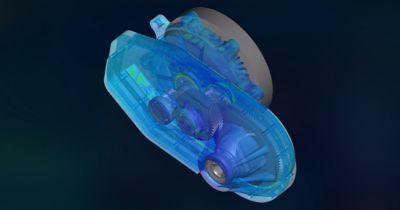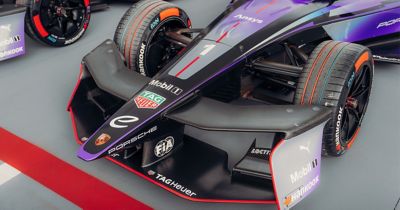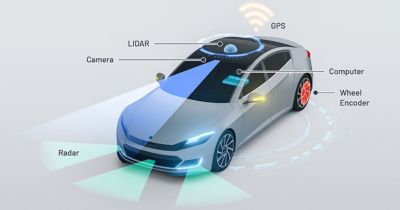-
United States -
United Kingdom -
India -
France -
Deutschland -
Italia -
日本 -
대한민국 -
中国 -
台灣
-
-
產品系列
查看所有產品Ansys致力於為當今的學生打下成功的基礎,通過向學生提供免費的模擬工程軟體。
-

大型汽車製造商正在投資新一代抬頭顯示器,而模擬有助於應對安全難題。
為了在競爭日趨激烈的全球市場中取得勝利,汽車製造商需要研發全新技術,協助提供安全、舒適的駕駛體驗,讓自己脫穎而出。抬頭顯示器 (HUD) 正成為創新與競爭差異化的關鍵領域。
為協助駕駛保持視線並將干擾降至最低,抬頭顯示器(HUD)將關鍵資訊,如時速表讀數、燃油量、導航指引和交通警告,投影到擋風玻璃或駕駛員視線範圍內的專用鏡面上。HUD 是一種擴增實境,已從航空產業引入商用汽車,作為現今先進駕駛輔助系統 (ADAS) 平台的重要元件。
隨著駕駛擁抱這項尖端技術,HUD 的市場也蓬勃發展。事實上,該領域規模預計將於接下來的八年內成長四倍,從 2023 年的 16 億美元增加到 2032 年的 70 億美元。
各家世界龍頭汽車製造商正在關注這一問題,並據此投資。他們的聚焦在將HUD目前相對較小的區域跨大,以橫跨整個擋風玻璃,將駕駛視線離開道路的狀況降至最低。福特(Ford)、BMW 和通用汽車(General Motors)都在投資全擋風玻璃顯示器的專利和原型。
最具野心的開發工作可能是由現代汽車(Hyundai)領導,該公司預計最早於 2027 年就推出橫跨擋風玻璃的 HUD。現代汽車(Hyundai)也推出經過重新設計的車艙,移除了儀表板,讓 HUD 的玻璃面積更大。

這些影像說明微調改善工具校能指標函數是如何提升影像品質的。Ansys Zemax OpticStudio 光學系統設計和分析軟體能夠修正或減少鬼影。從左到右,圖片顯示原始系統、中間改進版和最佳化後的系統。
透過 Ansys 實現設計最佳化
HUD 的開發歷來面臨複雜的設計挑戰,主要是因為涉及人類感知。跨職能設計團隊不僅必須解決玻璃強度和投影系統成本等實際問題,還必須解決人類行為和視覺能力的差異。設計人員必須考慮各種易讀性和照明問題,例如鬼影、變形、彎曲和色差。
雜散光是最大的不確定因素之一,其定義為偵測器感應到或人類感知到的任何意外光線。如果雜散光來自 HUD 自己的光學元件 (舉例來說,擋風玻璃塗層意外地反射光線),可能會造成鬼影反光,導致駕駛混淆,或是阻擋他們看透玻璃的視線。雜散光也可能來自非光學元件,例如太陽或迎面而來的前照燈,且會導致未預期的眩光。
隨著 HUD 的表面積增加,雜散光干擾顯示資料和前方道路能見度的風險當然也會增加。隨著 HUD 設計在科學上已成熟,汽車工程團隊現在擁有一系列能夠減輕離散光及其影響的工具和最佳實作範例。他們可以變更 HUD 光學元件的角度,材料、基板、塗層和位置。工程師也可以在其 HUD 設計中納入光線捕捉裝置,也就是捕捉意外光線的機械。
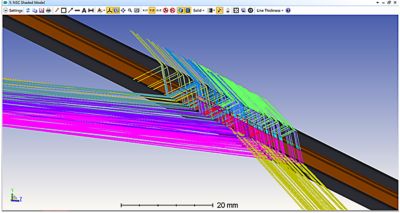
雜散光可能來自抬頭顯示器 (HUD) 本身。在此狀況中,分層玻璃組件中的基板會產生不必要的反射或眩光而影響駕駛。
但仍有一個棘手的問題:HUD 開發團隊如何準確地複製人類感知的完整範圍,識別各種可能的雜散光來源,並在進行昂貴的原型設計和物理測試階段之前消除不必要的光學現象?答案是工程模擬。
模擬是唯一快速可行且符合成本效益的方法,方法是模擬許多 HUD 元件,在數千個可能操作參數下複製其效能,並在低風險虛擬環境中調整設計,將雜散光及其影響降至最低。工程指標可協助設計人員達成預先定義的規格,同時瞭解人類體驗如何實際影響顯示器易讀性,這對於確保最高汽車安全標準至關重要。
作為模擬領導者,Ansys 提供兩種進階解決方案:Ansys Zemax OpticStudio 光學系統設計和分析軟體,以及Ansys Speos CAD 整合式光學和照明模擬軟體;即便是最先進和規模最大的 HUD 系統,也能精準再現其實際效能。
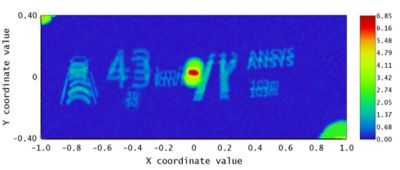
此圖準確展示外部來源 (太陽) 如何阻礙讀取 HUD 顯示資料的能力,並損害圖像生成單元 (PGU)。
結合感知藝術與光學科學
若要瞭解 OpticStudio 軟體和 Speos 軟體如何協作以偵測並將雜散光降至最低,就讓我們來看看由 Ansys 專家建立的模擬範例。它套用這兩套 Ansys 解決方案,改善投射到汽車鏡上的 HUD 設計。
首先,工程師可以在 OpticStudio 軟體中改善 HUD 系統,以達到預期的光學效能,同時減少光學元件導致的雜散光。這可能來自 HUD 本身內部或外部的模糊或太陽熱點,導致投射出來的影像難以讀取,甚至可能損壞圖像生成單元 (PGU)。調整鏡面形狀/角度、材料和塗層可以大幅減少這些影響。塗層的選擇也非常重要,例如新增冷鏡膜即可降低 PGU 溫度。
接下來,工程師將這些資料輸入 Speos 軟體,在實際駕駛情況下對 HUD 進行全面的整體分析,包括引入額外的機械外殼和其他非光學幾何要素。工程師首先會判斷最壞情況下的雜散光產生條件 (不僅在 HUD 系統中,還有外部世界產生的離散光)。然後,他們會模擬雜散光照射 HUD 玻璃表面、機械外殼或儀表板的影響。來自這些物體的眩光不僅會妨礙顯示器的能見度,也可能妨礙本來清晰的前方視線。我們也會從人類駕駛的角度驗證視覺體驗。我們可以準確地「看到」雜散光在再現人類視覺的虛擬世界中的影響,也就是眩光、景深等。工程師可以自問:「這些光學現象到底只會令人煩躁還是會對行車安全構成威脅?」
無論是哪種情況,設計人員都可以使用 Speos 軟體來套用設計修正,減輕雜散光的影響。舉例來說,設計人員可以調整顯示材料的特性,將眩光或反射降至最低。設計人員可以使用更多散射和吸收光線的材料,測試各種效果。
使用 Ansys 模擬不僅能輕鬆快速地變更設計,還能實現開發全新 HUD 所必需的跨職能合作。Ansys 驅動的模擬可以讓不同的團隊成員實現設計的實際效能、一同反覆測試,並創造出成功的虛擬原型,進而促進設計信心、團隊合作以及創新水平。
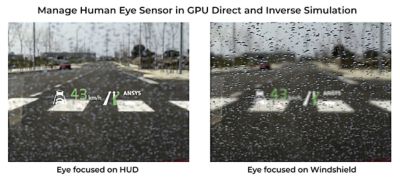
人眼的景深調節,這是呈現帶有雨滴的擋風玻璃上的 HUD 虛擬影像時的一項挑戰
推動設計領導與安全領導
汽車製造商目前處於一個艱困的處境中。市場需求促使他們快速推出 HUD 等創新的 ADAS 安全功能。但是,在汽車製造商爭相推出能讓品牌脫穎而出的車輛模型和數位技術時,他們不能在物理計算或嚴謹分析有所妥協。
Ansys 的模擬可提供兩個領域的最佳優勢:對實際駕駛條件下的系統效能進行全面的複雜分析,以及快速又實惠的設計和驗證方法。在 HUD 設計週期的最早階段可以考慮安全性,並進行反覆建模,直到該設計準備好進行實體測試。
隨著顯示器越來越大,功能也越來越先進,所有大型汽車製造商的眼光都集中在 HUD 的開發上。若想完成這些雄心勃勃的計畫,就要善用 OpticStudio 軟體和 Speos 軟體,以及汽車設計領域的其他最佳實作範例。











